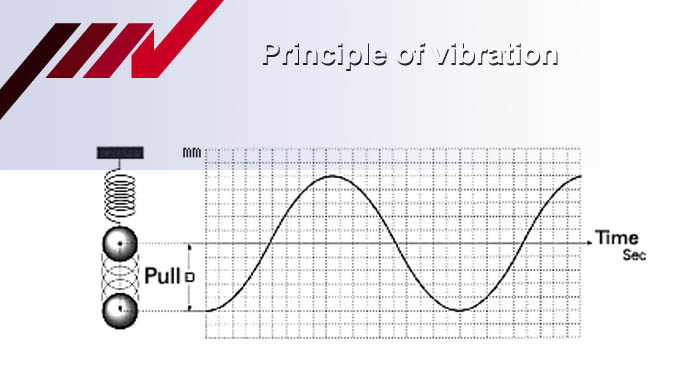What is vibration? – Fundamental concept of vibration
Have a look at the unknow world of vibration – Fundamental concept of vibration. Why does vibration happen? Why do you need vibration measurement?
First of all, what is Vibration...?
Let's learn about the fundamental science behind vibration.
4 elements that compose vibration
Frequency / Displacement / Velocity / Acceleration
Vibration means the state of object that moves repetitively back/forward, right/ left or up/down and is generally expressed by Frequency, Displacement, Velocity, and Acceleration.
These 4 elements are generally denoted as f, D, V, A. This is illustrated by a simple of a spring and mass. When the mass is pulled down from the start position and released, the mass has the vibration waveform shown by the graph.
Frequency (F)
Frequency means the number of times that vibrating object generates a repetitive motion in 1 second.
Displacement (D)
Displacement means the amplitude (distance) between the peaks of vibration.
Velocity (V)
Velocity means the changing rate of Displacement(D) with time and is expressed by the unit of mm/s, cm/s, or m/s
Acceleration (A)
Acceleration means the changing rate of Velocity(V) to time and is expressed by the unit of m/s2.
Types of vibration
See / Feel / Hear
Vibration is divided into three types based on the human senses; that as slow as the eye can see; that felt by touching, invisible, and that which makes only a vibrating sound but is invisible and can't be felt by hand.
When the displacement is the same, the visible vibration has a lower frequency, velocity and acceleration. On the other hand, the invisible vibration that is recognized only by its sound has a higher frequency, velocity and acceleration. The vibration felt by touch occurs between the visible and the invisible vibration range. However, there are small differences in each individual case because the recognition of vibration depends on human senses.

